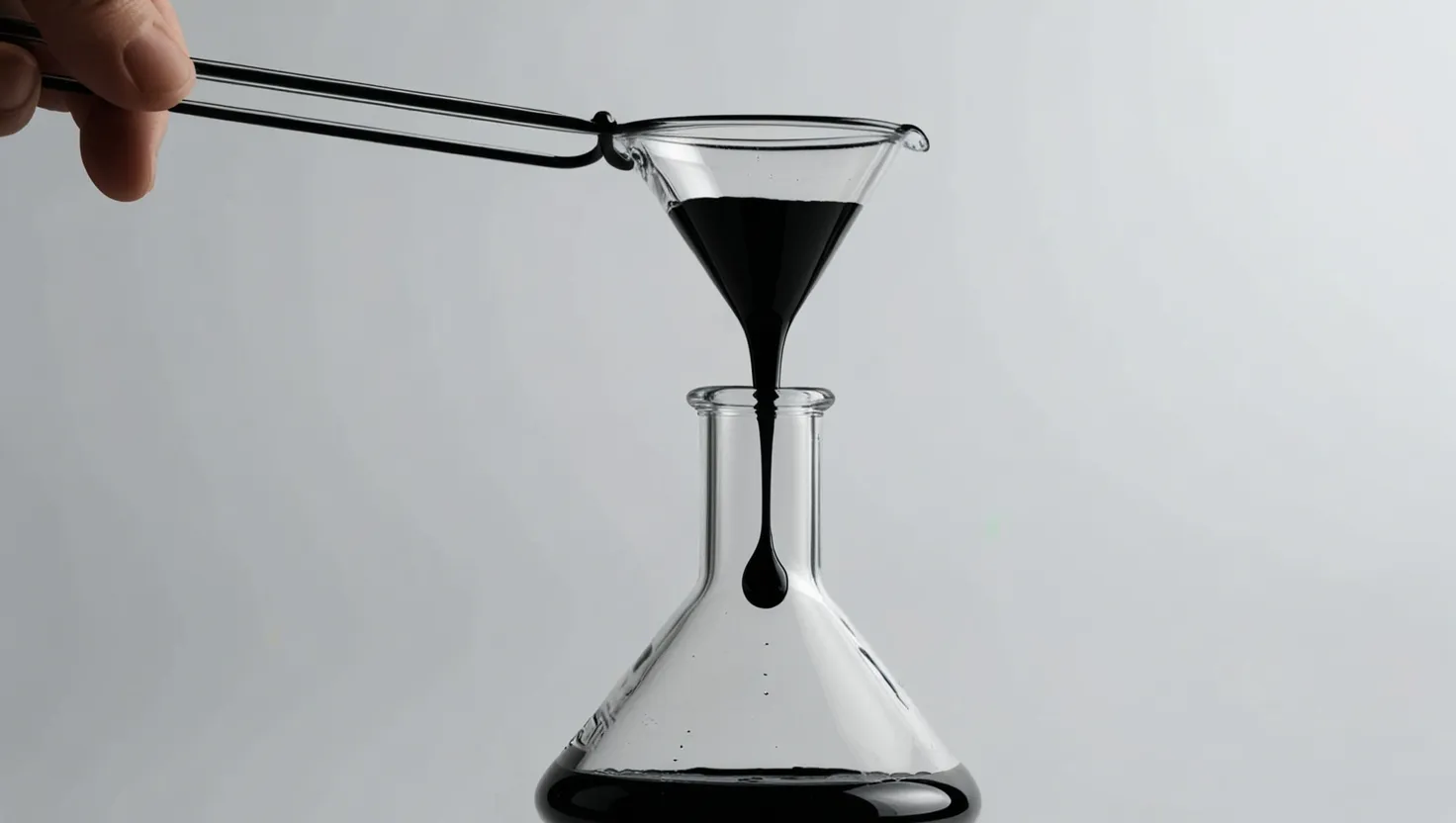The Pitch Drop Experiment stands as a testament to the patience and perseverance required in scientific inquiry. For nearly a century, this deceptively simple setup has captivated researchers and the public alike, offering a window into the strange behavior of materials that defy easy categorization.
I find myself drawn to the poetic nature of this experiment - a substance that appears solid to our eyes, yet flows imperceptibly over decades. There’s something almost meditative about contemplating the gradual formation of each precious drop.
“The most exciting phrase to hear in science, the one that heralds new discoveries, is not ‘Eureka!’ but ‘That’s funny…‘” - Isaac Asimov
Indeed, the Pitch Drop Experiment has produced its fair share of “That’s funny” moments. The unexplained variations in drop formation rates and the bizarre structural changes observed within the pitch itself challenge our understanding of material physics. What hidden forces are at work in that unassuming glass funnel?
As I delve deeper into the history of this experiment, I’m struck by the human stories intertwined with the science. Generations of researchers have dedicated years of their lives to watching and waiting, only to be foiled time and again by cruel twists of fate. A malfunctioning webcam, a brief coffee break - tiny moments that caused them to miss witnessing the culmination of decades of patience.
There’s an almost Sisyphean quality to their efforts. Will we ever manage to capture that elusive moment when a drop finally breaks free? Or is the Pitch Drop Experiment destined to remain forever just beyond the reach of human observation?
“The most beautiful experience we can have is the mysterious. It is the fundamental emotion that stands at the cradle of true art and true science.” - Albert Einstein
The mysterious nature of the pitch drop phenomenon certainly evokes a sense of wonder. How can a substance behave as both a brittle solid and an ultra-slow-moving liquid? What can this teach us about the fundamental properties of matter?
I’m particularly intrigued by the recent discoveries of quantum-level energy fluctuations within the pitch. This hints at connections between the macroscopic world we can see and touch, and the bizarre quantum realm that typically only manifests at the tiniest scales. Could the Pitch Drop Experiment be offering us a rare glimpse of quantum effects bleeding into the everyday world?
As we look ahead to the anticipated fall of the tenth drop sometime in the coming years, I can’t help but ponder: what new surprises might it hold in store? Will we finally witness the moment of separation, or will fate intervene once again to keep this phenomenon shrouded in mystery?
What do you think - will we ever manage to observe a drop fall in real-time? Or is there something about the act of watching that influences the outcome, like some kind of large-scale quantum observer effect?
The Pitch Drop Experiment also raises fascinating questions about the nature of time and human perception. In our fast-paced world of instant gratification, there’s something almost alien about a process that unfolds so gradually. It forces us to confront the limitations of our senses and intuitions about how materials behave.
I wonder - how might our understanding of the world change if we could perceive time at the glacial pace of flowing pitch? What other slow transformations might we notice in the world around us?
“The important thing is not to stop questioning. Curiosity has its own reason for existing.” - Albert Einstein
This spirit of relentless curiosity is truly embodied by the researchers who have dedicated their careers to unraveling the mysteries of the Pitch Drop Experiment. Despite decades of frustration, they continue to probe and analyze, always seeking new insights.
Their efforts have not been in vain. The experiment has yielded valuable data on the viscosity of pitch - estimated to be roughly 230 billion times more viscous than water. This extreme property has practical applications in fields like materials science and engineering.
But perhaps more importantly, the Pitch Drop Experiment serves as a powerful reminder of the value of long-term scientific studies. In an era of shrinking research budgets and pressure for quick results, this nearly century-old experiment demonstrates how patience can reveal hidden truths about the nature of our world.
I’m struck by how this simple setup continues to challenge our most sophisticated measurement techniques. Even with advanced imaging and sensors, capturing the precise moment a drop falls remains elusive. It’s a humbling reminder of how much we still have to learn about seemingly basic physical processes.
What other long-term experiments might yield surprising insights if we had the patience to conduct them? Are there other common materials whose true nature we’ve overlooked simply because their changes occur too slowly for us to easily perceive?
As we approach the centennial of the Pitch Drop Experiment’s inception, I can’t help but marvel at its enduring relevance. What began as a simple classroom demonstration has evolved into a profound exploration of the boundaries between states of matter, the nature of time, and the limits of human observation.
“The most incomprehensible thing about the world is that it is comprehensible.” - Albert Einstein
This quote resonates deeply when contemplating the Pitch Drop Experiment. On one hand, it seems to defy comprehension - a solid that flows, a liquid that shatters. Yet through careful study, we’ve gained genuine insights into its behavior and properties.
I’m particularly fascinated by the interdisciplinary nature of current research on the experiment. Physicists, chemists, materials scientists, and even philosophers are all bringing their unique perspectives to bear on this deceptively simple setup.
Some researchers are exploring connections to the glass transition - the process by which some materials transition between liquid and solid-like states. Others are investigating how the extreme viscosity of pitch relates to the behavior of other ultra-slow-flowing materials like glaciers and the Earth’s mantle.
There’s even been speculation about potential applications in the field of soft robotics. Could materials with pitch-like properties be used to create machines that change shape and function over very long timescales?
As we look to the future, I’m excited to see how emerging technologies might shed new light on the Pitch Drop Experiment. Advances in high-speed imaging, machine learning-enhanced data analysis, and novel sensor technologies all have the potential to reveal previously hidden aspects of this phenomenon.
What new questions will arise as we continue to study this seemingly simple substance? Will we ever fully understand the complex interplay of forces at work within that glass funnel? Or will the Pitch Drop Experiment continue to surprise and confound us for another century to come?
In many ways, the enduring mystery of the Pitch Drop Experiment embodies the very essence of scientific inquiry. It reminds us that the universe is full of wonders waiting to be discovered, if only we have the patience and perseverance to look closely enough.
As we eagerly await the fall of the tenth drop, I’m filled with a sense of anticipation. Will this be the time we finally witness that elusive moment? Or will the pitch continue to guard its secrets, teasing us with glimpses of a world that moves just beyond the edges of human perception?
Whatever the outcome, I’m certain that the Pitch Drop Experiment will continue to inspire curiosity and spark the imaginations of scientists and the public alike for generations to come. In a world of rapid change, there’s something profoundly reassuring about this steady, patient pursuit of knowledge.
What aspects of the Pitch Drop Experiment do you find most intriguing? How do you think it might influence our understanding of materials and time in the years to come?






